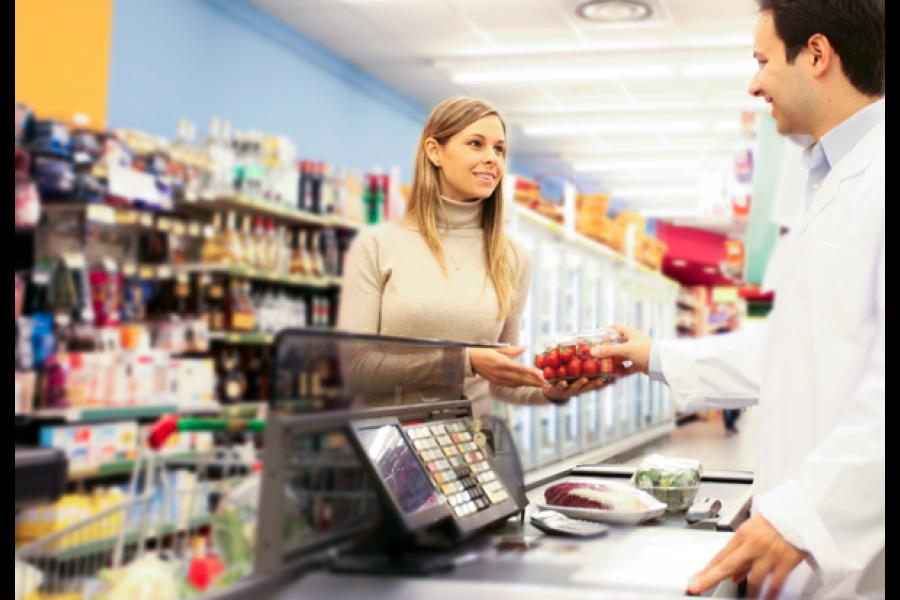5 Ways to Save the Physical Retail Store
Whatever route retailers take to save their stores, they must use processes and technology to one end: Humanize
Image: Shutterstock
My inbox is inundated with e-tail offers. One ‘deal of the day’ after the other — each enticing me to ‘buy it now’.
E-tailers get it. In the time of instant economy, they’ve created ‘everything stores’ that have us responding with click, cash and coin. Many will attribute their success to ‘anytime, anywhere’ convenience. But peel off the digital layers and there’s a certain level of intimacy: E-tailers remember my name, what I like, where I want my goods delivered, and they’re sure to make a recommendation or two. Sounds familiar? It should, because that’s just what the retail store used to be.
Something interesting happened on the way to the e-tail boom: Processes and technology dehumanised the store experience. This worries me, both as a consumer, and as someone who’s spent a sizeable portion of his career in the technology of retail. A common refrain I hear from retail CXOs is, “We’re bleeding.” And the wound no doubt, is in equal parts caused by a tepid economy, lagging the omni-channel revolution, and the rise of the e-tailer.
But there’s hope yet, in the form of micro and macro trends. Based on the trends, here are five ways to bring consumers back to the physical retail store.
1. There’s so much to do Back in the day, visiting the store was an experience. Because there simply weren’t enough experiences around. And now, there are just too many to choose from. Retailers have tried workshops on mountaineering, sessions from kayaking to power dressing, community events, even in-store dining. Large retailers have what it takes to create a sustainable event calendar for consumers – but to ensure return on investment, events must be associated with the products they sell.
2. More than a cart and a checkout
Adding fuel stations or nail salons to stores is nothing new. But the same principle applies – what additive service will hook consumers? A gymnasium, may be? If budgets are prohibitive, how about bringing in just a treadmill and some weights? There are also insurance services, gaming centres, movie zones – whatever works. It’s not too far-fetched to imagine a part of the store that is a warehouse with an e-commerce fulfillment center. This can be augmented with an ‘app’ to create a shopping list complete with a pick-up of goods from this fulfillment center using a ‘drive-through’ window. The center could even accept returns of an e-tail purchase.
3. Only at the store
Some retailers have created unique brands born out of exclusive partnerships with fashion designers. And these brands are available in-store only. So if you want it, come and get it. While not all retailers can take this route, the question that must be asked is this: Can they create ‘unique’ products or ‘limited editions’ that pique the consumers’ curiosity and increase their willingness to step into a brick-and-mortar store?
4. Go big on going small
The big news this February was Walmart’s decision to cut back on super-centers and open up to 300 Express and Neighborhood Market stores by the end of the year. With weak quarterly performance weighing down large retailers, could this be the way forward for them? More small stores make sense if retailers can’t sustain the investment of larger stores. And the benefits of ‘mini’ are many, including the opportunities for personalisation and the ability to nurture a community.
5. Sell your own pre-owned products
Companies like 2nd Swing have a market all to their own. Clothes Mentor has stores in 25 US states and they’re reselling marquee brands like Ann Taylor and Louis Vuitton. What I’m saying may cause certain retailers to balk at the very idea, but how about selling your second-hand products in your own store? Yes, it strikes at the very foundation of the image that certain brands have carefully crafted over decades. But, if the consumer is willing, why not? Brand your pre-owned store differently if you will, but there’s a growing market out there.
Whatever route retailers take to save their stores, they must use processes and technology to one end: Humanize.
Can an in-store mobile coupon personalize the price just for you? Can a tablet point-of-sale remember your card details? Can the shelf guide you to it? Can an interactive dressing room mirror work with your preferences? Can stores deliver the same experience consumers are used to online?
Retailers are working closely with service providers to answer these questions. Many industry watchers foretell a future without stores. I don’t. There’s no denying that e-tailers will continue to surge ahead. But in a world where there’s an experience to be had, the physical store survives. Whether it will thrive depends on how retailers bridge the physical-digital divide.
- By Aniket Maindarkar, Head – Americas Operations, Infosys BPO
The thoughts and opinions shared here are of the author.
Check out our end of season subscription discounts with a Moneycontrol pro subscription absolutely free. Use code EOSO2021. Click here for details.
